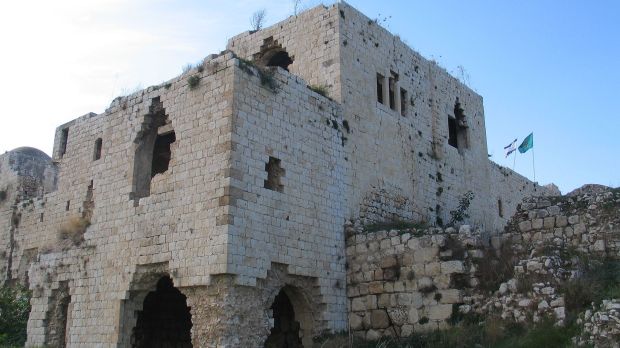A large Crusader era fortress in central Israel is preparing to open its doors to the public after 30 years of sporadic maintenance and renovation, the Nature and Parks Authority of Israel announced on Tuesday. The massive stone structure features a scenic view of Jaffa to the Samaria hills along with over 2,000 years of military history from the armies of Alexander the Great to Salah-al-Din.
The fortress, which the Crusaders dubbed “Mirabel” (Latin for “wonderful”), can trace its history to around 550 BC. From the 1st century BC until the 4th century AD the area was populated by Jews, but occupied by the Romans.
During the Great Revolt against the Romans (66 AD) the Jewish-Roman chronicler Josephus Flavius recorded that Cestius Gallus, Governor of the Roman province of Syria, smothered the rebellion, which only truly ended four years later with the destruction of Jerusalem and many surrounding Jewish towns by the Romans. The “Mirabel” site however was a refuge to the Jews, who had won several battles at this time.
The Crusaders landed on the hill in the 12th century and the Ibelin family (a nobel Crusader family) constructed most of what remains at the site today. Before the 12th century ended the fortress was taken by Saladin’s brother al-Adel I, who converted the structure into a Muslim Ayyubid base against the Crusaders. Four years later, however, Saladin ordered the fort to be destroyed.
The site was rebuilt to protect the road to Jaffa by the Ottomans in the 16th Century. The site would change hands several times more until it fell into disrepair in the 19th century. It was not considered a landmark until 2008, when it became a National Park.
For years, the fortress was closed to the public due to safety concerns. Prior to their conservation efforts, large stones were in danger of falling from the walls and many of the ceilings were threatening to collapse.
The work began in 1995, but ceased after a few years. The project was taken up again in 2006, but similarly the efforts only lasted a few years and did not complete the restoration. Then in 2014, a dozen new high-rise apartment buildings were built in the nearby Rosh Haayin, an expansion effort by the Israeli authorities.
As the surrounding land is a popular picnic spot, the Parks Authority decided to finish the restoration to the fortress in the hopes that the revitalization would serve the new nearby community and the site could draw more tourism. In the future, they plan to create a visitors center at the site, along with a coffee shop.
During the excavation process, archaeologists discovered remnants from the First Temple Period, buried three meters beneath the floors. This discovery dates the site much earlier than originally thought. Most of the building was constructed in the 12th century. The Times of Israel notes that during the Ottoman empire, Sheikh Sadeq Jamaini, from the village of Jamain near Ariel, settled in the village and the tower was named Majdal Sadeq or Migdal Tzedek.
The reopening will be a concentrated push by the Nature and Parks Authority to preserve open spaces around populated areas. The area surrounding the fortress will work to preserve the native wildlife, which is mostly gazelles and hyenas.
2018 has been a good year for tourism in Israel, which has seen a 27% increase in international visitors to their national parks. Israel’s most popular parks, Caesarea and Masada, received about one million visitors each and overall the countries national parks increased from 10.2 million in 2017 to 11.5 million in 2018.

